Hello prof. @yohan2on, thank you once again for giving us this wonderful lecture on The Governance of Tron ecosystem. I really learnt so much. Below is my homework task.
The TRON ecosystem has been one of the immerging ecosystems that has gained ground in due time due to its implementation of the Delegated Proof-of-Stake mechanism by providing high scalability as a build-up of the initial Proof-of-Stake mechanism flaws. With the implementation of the Tron ecosystem, users can stake any number of TRX tokens in the ecosystem, which provides a great Return on Investment (ROI) of 8% APY, as well as voting rights to elect witnesses on the ecosystem based on their staking power.
Who are Super Representatives, SR partners and SR candidates? (The Governance of the TRON Ecosystem)
Super Representatives
Super Representatives on the TRON ecosystem are in charge of transaction validation and the creation of new blocks in the ecosystem. There are 27 Super Representatives on the ecosystem who apply to be elected by token holders/stakers as Super Representatives, which the voting is done every 6 hours. Every TRX token staker in the ecosystem has the right to franchise their votes based on their TRON power. Based on the vote cast, the highest votes pooled would be arranged from 1-27 in accordance with their respective votes.
As it stands, super representatives earn a reward of 16TRX for each block produced which is known as SR rewards.
Below are the top 27 Super Representatives in the Tron Ecosystem.

Super Representative Partners
When 27 Super Representatives are elected from 127 applicants on the Tron blockchain, the remaining applicants who did not make it to the 27 are automatically grouped to form the Super Representative Partners ranging from the 28th to the 127th position. Since Super Representative Partners are not part of the Super Representatives, they therefore do not engage in the block production and validation process, but they do earn rewards for newly created blocks and validations, which are based on their voting power. The existence of Super Representative Partners on the Tron blockchain is very essential as they tend to raise proposals and see to the proper governance of the ecosystem. Below is the list of Super Representative Partners.
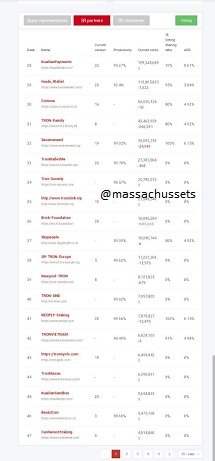
Super Representative Candidates (SRC)
In the Tron ecosystem, 147 candidates are unanimously elected by token holders. As already stated, the election of candidates is done every 6 hours. Super Representative Candidates are in the range of 128th – 147th candidates, and they are basically treated as supplementary candidates for the next vote in the various governance systems of the Tron ecosystem and are well rewarded based on their voting power.
Below is the list of Super Representatives:
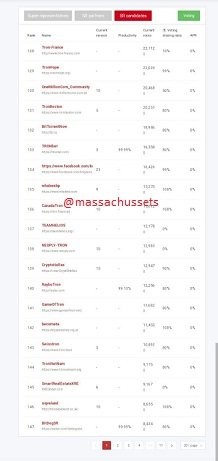
What’s the difference between DPOS and POS consensus mechanisms?
Proof-of-Stake Consensus Mechanism (POS)
Since the implementation of the blockchain technologies which used the Proof-of-Work consensus mechanism in their operation, which came with a whole lot of flaws, including the high cost of energy, which resulted in the high consumption of electricity, and security issues, which saw the birth of the Proof-of-Stake consensus mechanism to curtail the flaws of the Proof-of-Work, which saw the improved efficiency of block production and validation process.
The Proof-of-Stake consensus mechanism, as we all know, is a consensus protocol which is used in the validation of transactions based on the number of tokens staked or locked in the ecosystem. One of the merits of proof-of-Stake over the traditional proof-of-Work is that, validation is done randomly but not based on who is the first to solve the computational problem. The blockchain systems that use this consensus are as follows: DASH, NEO, ADA, Polkadot, and many more.

Delegated Proof-of-Stake (DPOS)
The Delegated Proof-of-Work consensus mechanism was birthed by our very own Daniel Larimer as an expansion of the Proof-of-Stake consensus mechanism, which indicates that the improved system that was implemented to solve the flaws of the earlier consensus has also got its own flaws.
The Delegated Proof-of-Stake consensus mechanism gives users the opportunity to vote and elect delegates for the purpose of faster validation of the next block. This is done by users staking their tokens in a pool and choosing their preferred delegate. Validators in the ecosystem are known as witnesses, and they earn rewards from the block transaction fees that are shared in accordance with the number of tokens staked.

Differences Between DPoS and PoS Consensus Mechanism
| Delegated Proof-of-Stake | Proof-of-Stake |
|---|---|
| In the case of delegated proof-of-stake, users vote and elect witnesses for the purpose of block validation. | The block validation in a proof of stake system is chosen in a random manner based on the stake power of the user. Users with more tokens get the opportunity to validate transactions. |
| DPoS is developed to function in a semi-centralized Blockchain system. | Whereas PoS is developed to function in a decentralized Blockchain system. |
| DPoS cannot be forked | Whereas PoS can be forked |
| There is no excessive hoarding of tokens. | There excessive hoarding of token |

Write a Step by Step tutorial showcasing how to stake/freeze TRX and vote for SRs.
First of all, you need to download the tronlink from either playstore or appstore.
- After a successful download, open the tronlink app.
- Now sign up and go to the homepage of the tronlink.
- On the homepage, we have options like Send, Receive, Swap, Freeze, Vote
Per the question asked, i will be exploring the Freeze option for now before venturing into the vote option.
- First Lets click on the Freeze option
On the page that opens, a column is shown which asks for Frozen amount. I will be freezing 10TRX for this assignment which i will be receiving an equivalent of 10 voting rights.
Click on Freeze to confirm.
- Enter your password to gain access.
- After entering the password to confirm we can see that i have frozen 10TRX.

After we are done freezing our trx. Lets now talk about how the voting process works.
- Just like the freezing option was found on the homepage, we can locate the vote option on that same page.
- Now choose your preferred SRs from the list of SR available on the page. For the purpose of this assignment, I will be voting for the Ant Investment which has a 6.72%.
- Click on the Vote Button
- Enter your preferred vote, I will be entering my 10 votes
Click on Confirm
Enter you password to confirm your process.

Conclusion
The TRON ecosystem has been one of the immerging ecosystems that has gained ground in due time due to its implementation of the Delegated Proof-of-Stake mechanism by providing high scalability as a build-up of the initial Proof-of-Stake mechanism flaws. Super Representatives on the TRON ecosystem are in charge of transaction validation and the creation of new blocks in the ecosystem. The existence of Super Representative Partners on the Tron blockchain is very essential as they tend to raise proposals and see to the proper governance of the ecosystem. Thank you @yohan2on for impacting us with more knowledge always.
All screenshots are taken from the tronlink wallet

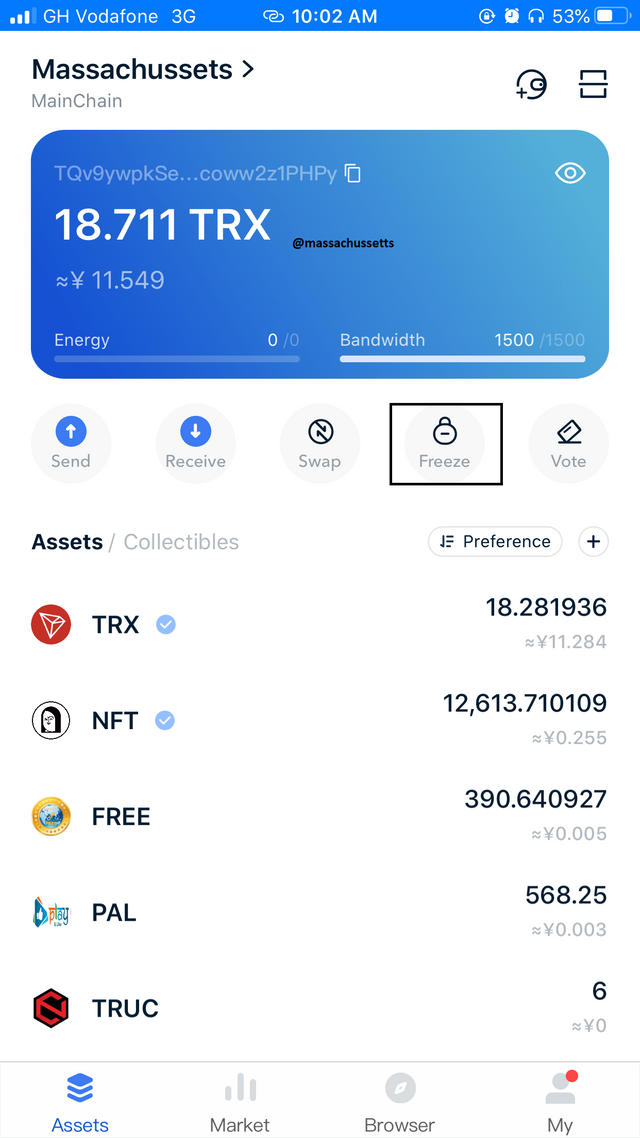
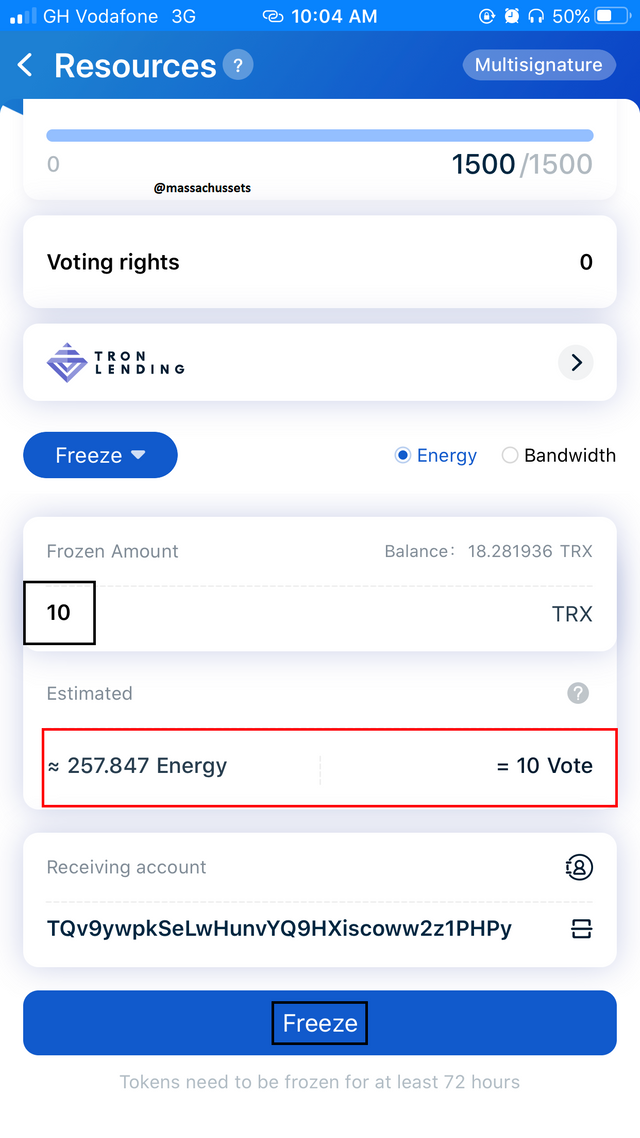

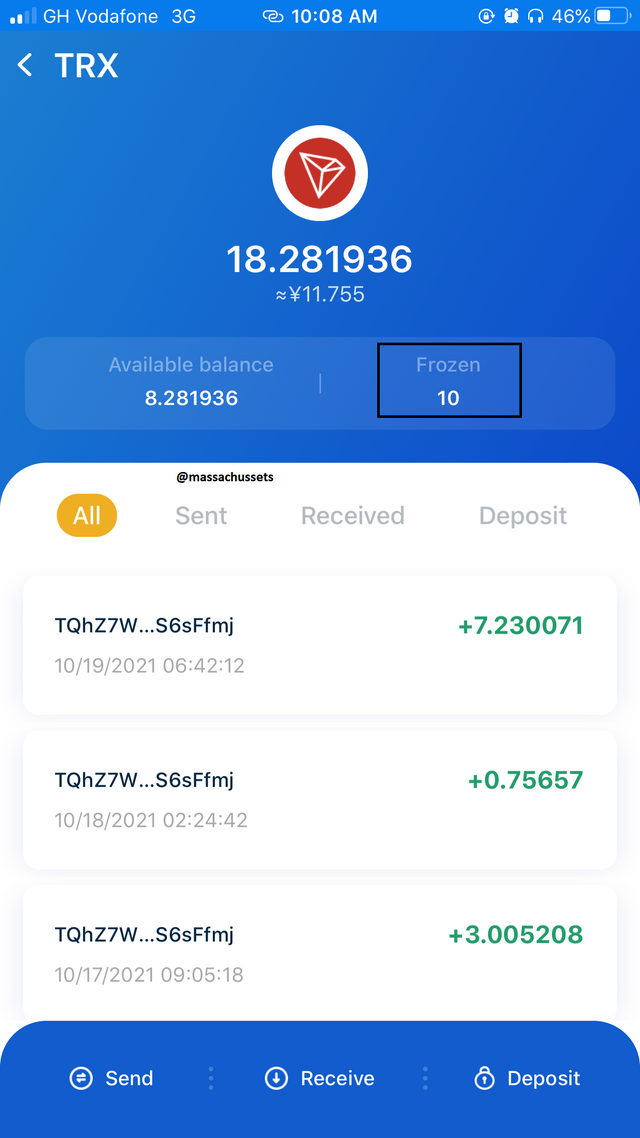
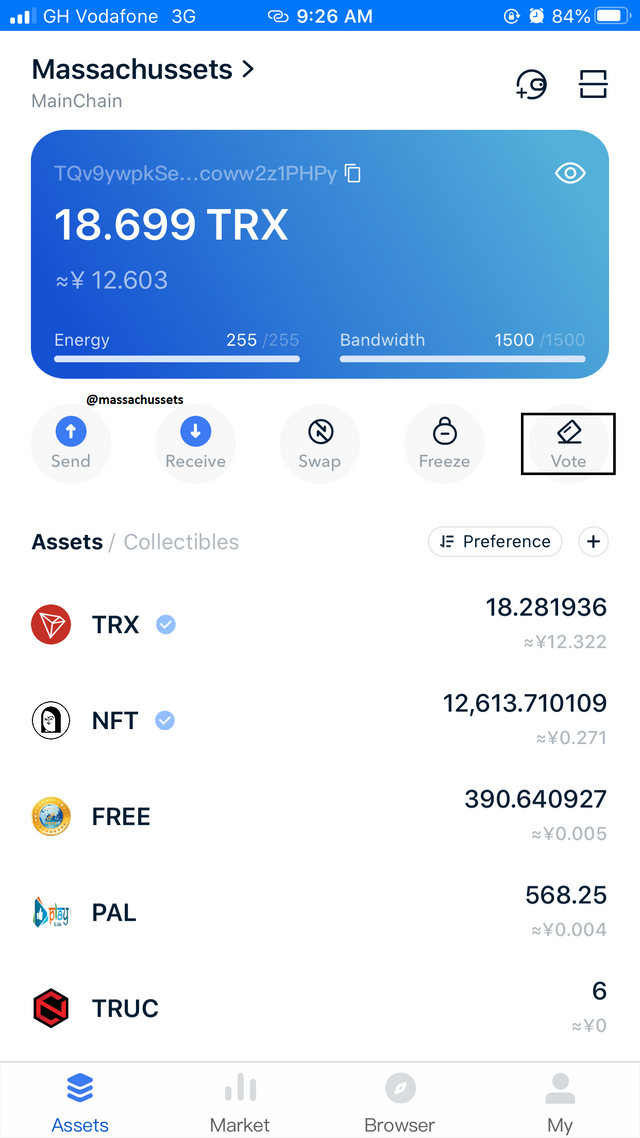
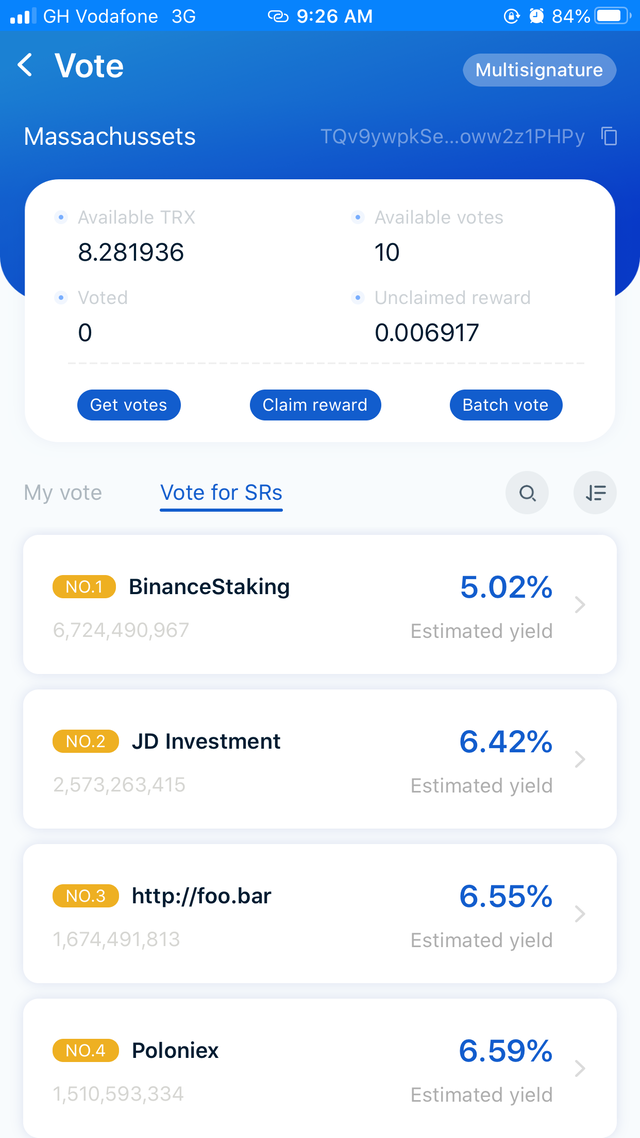
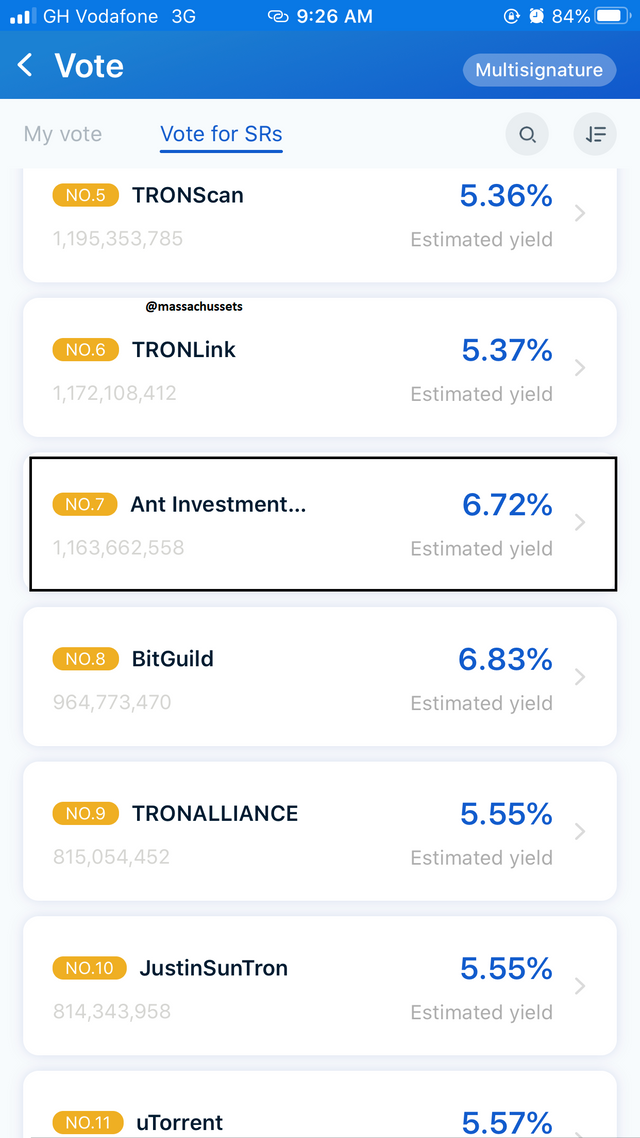
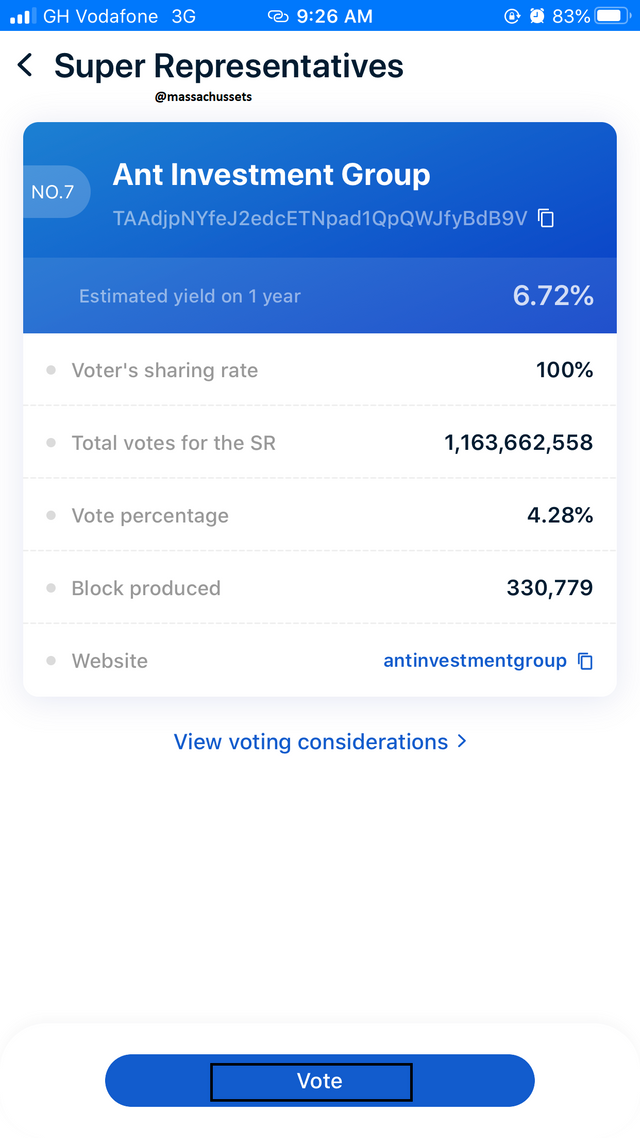
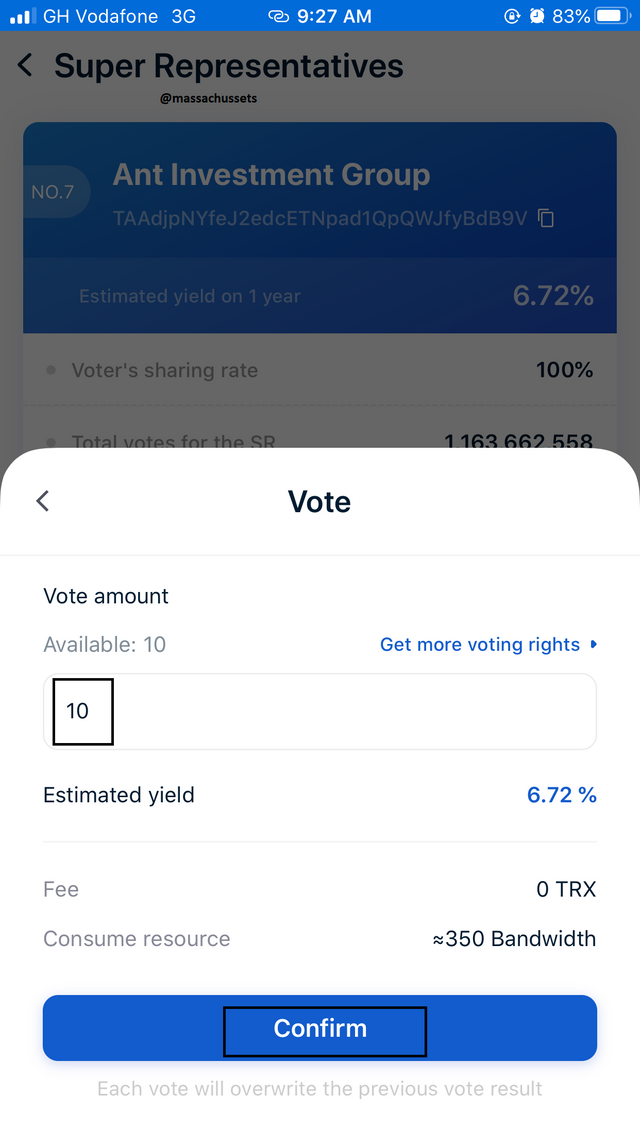
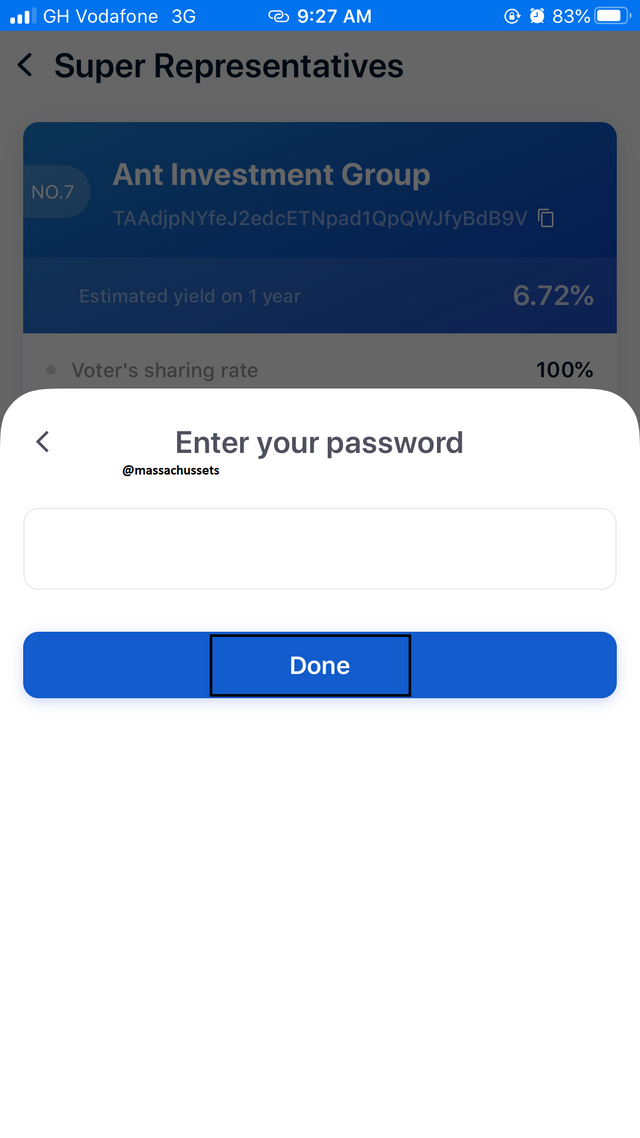
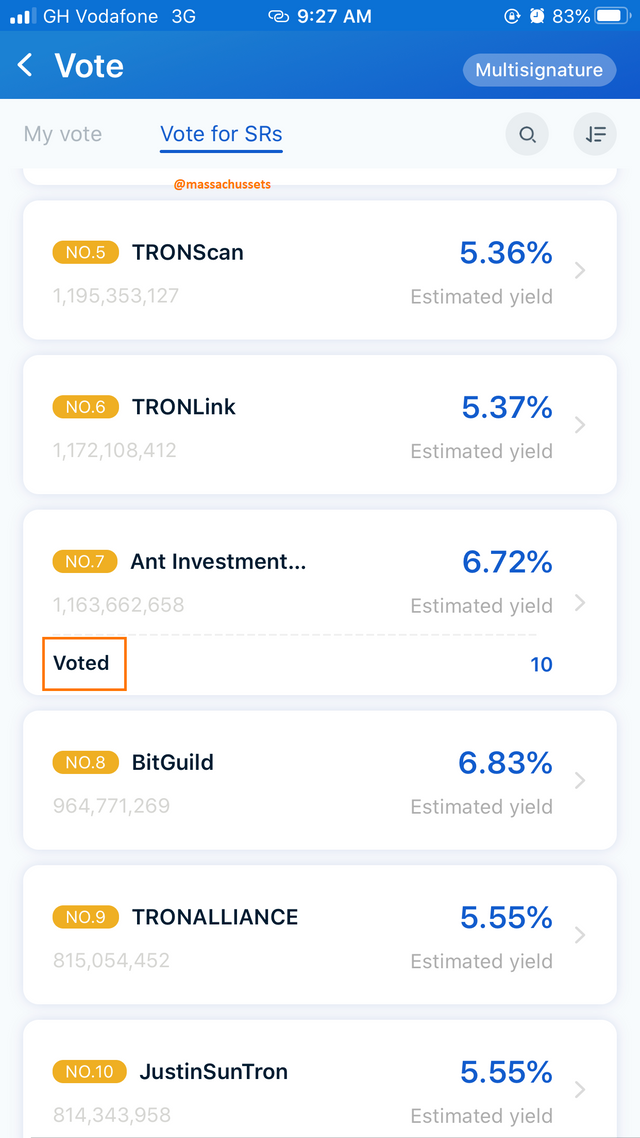
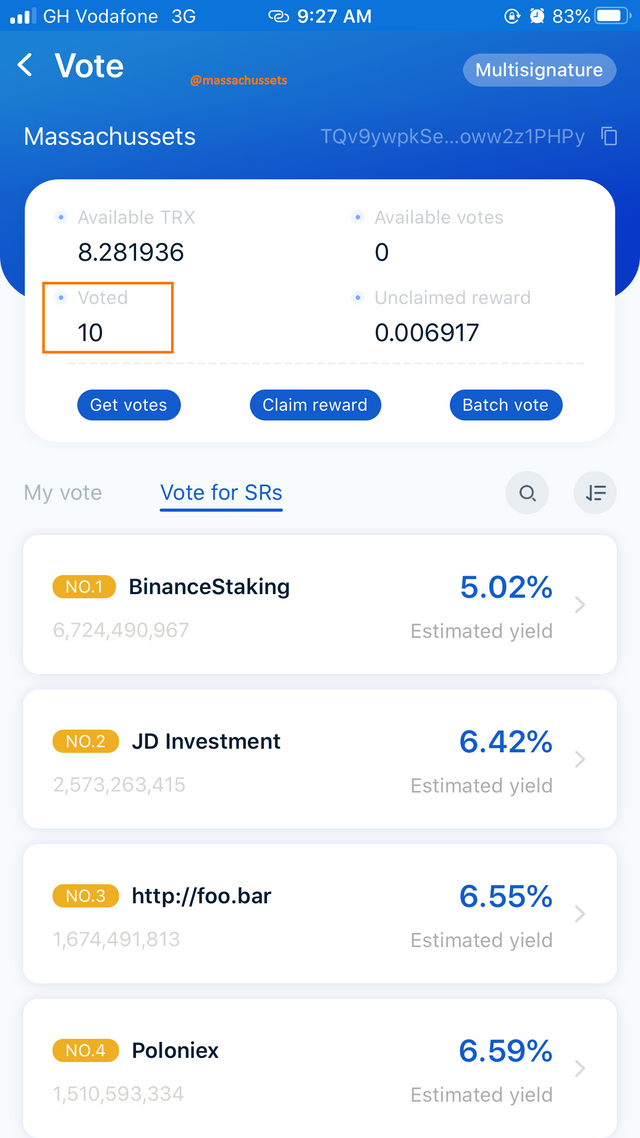
Hi @massachussets
Thanks for participating in the Steemit Crypto Academy
Feedback
Total| 7/10
This is good work. It would be better if you added an illustration while defining PoS and DPoS. Otherwise, thanks for taking the time to learn about the Governance of the Tron ecosystem.
You are not eligible for #club5050 because
Downvoting a post can decrease pending rewards and make it less visible. Common reasons:
Submit
Hi professor @yohan2on the review you have for my homework entry isn’t fair at all. I really did research to produce that work piece out. Please review it again. Please you can’t use one sentence I made an error to judge everything. Please kindly review it again.
https://steemit.com/hive-108451/@farhmade/governance-of-the-tron-ecosystem-crypto-academy-s4w7-homework-post-for-professor-yohan2on
Downvoting a post can decrease pending rewards and make it less visible. Common reasons:
Submit